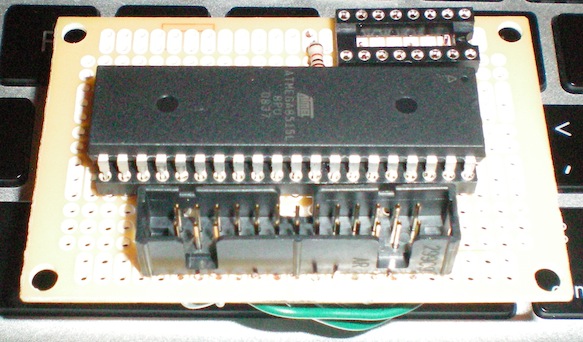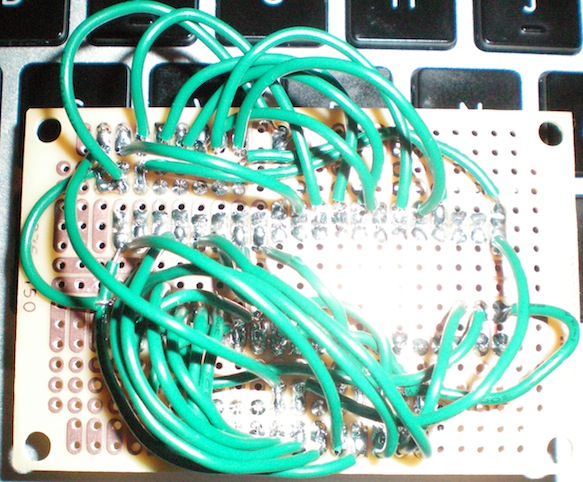My effort to find the right keyboard for my Apple 1 was a long and relatively fruitless process. Since the original Apple 1 did not supply a keyboard, a variety of keyboards were used. The requirement is that the keyboard needs to provide an ASCII interface that you can wire into the Apple 1 keyboard socket. A common choice for this was a Datanetics keyboard. As it turns out, datanetics and every other variety of ASCII keyboards have become very tough to find. As a result, people have done things such as create PS/2 interfaces to connect new keyboards. If you are lucky enough to find an original Apple II or Apple II plus keyboard, you can wire it directly into the Apple 1, but those keyboards are becoming rare and valuable. A slightly less rare and less valuable keyboard is from the Apple IIe, but these boards do not have an on board encoder.
Ultimately I decided that my best option was to try to use an Apple II keyboard for authenticity over a PS/2 keyboard. I could not find a reasonably priced II or II plus keyboard, so I decided to create an encoder for a IIe keyboard I already had. I leveraged information I found from some people who wanted to do the same thing. Design and assembly was pretty straight-forward, and went pretty quickly. In final testing I found that D6 on my ATMEGA8515 is broken and is wired to B7 on my Apple 1. Because B7 floats high, this has the effect of only being able to type in A-Z and no other keys work properly. I am ordering a replacement ATMEGA8515 and hope that with that my keyboard interface will finally be complete.


As soon as I get it working 100% I am going to do a small run on a few PCBs. I’ll post them when I do.